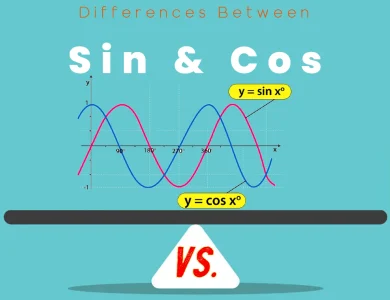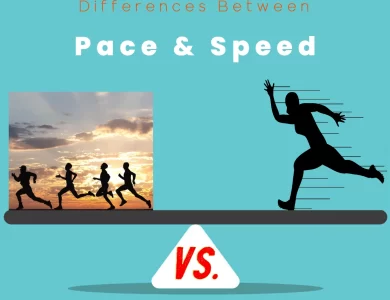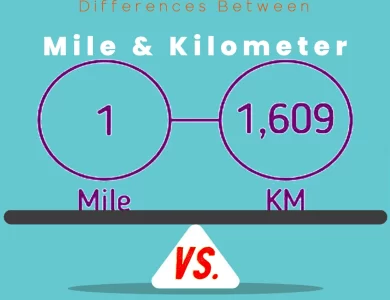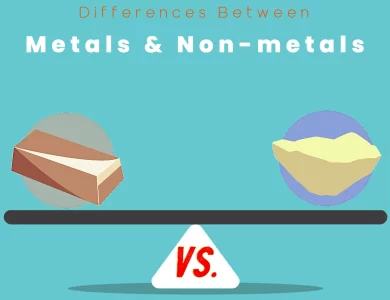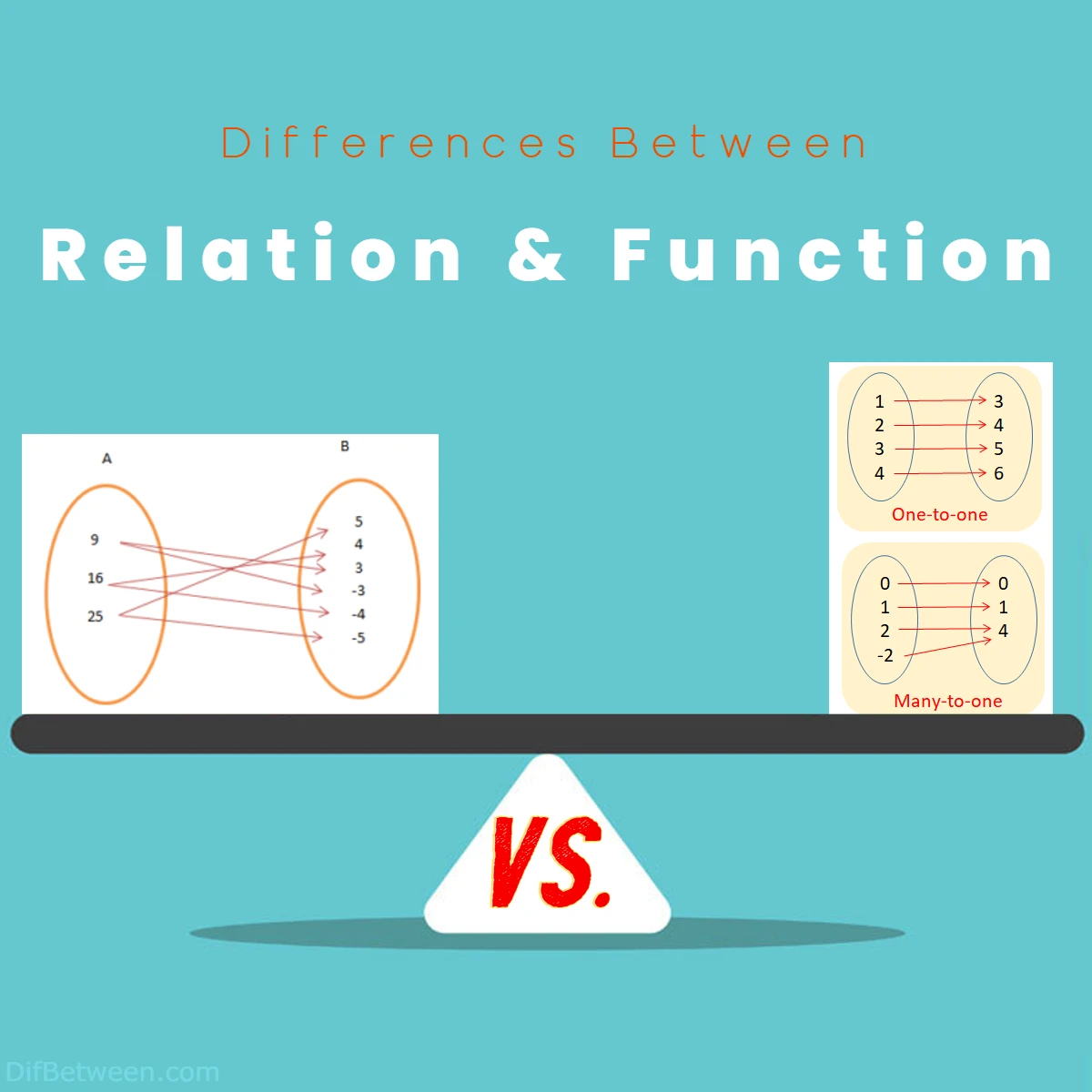
| Aspect | Relations | Functions |
|---|---|---|
| Definition | A relation is a set of ordered pairs that establish connections between elements from two sets. | A function is a specific type of relation where each input is associated with a unique output. |
| One-to-Many vs. One-to-One | A single element from the first set can be linked to multiple elements in the second set. | Each element from the first set is linked to only one element in the second set. |
| Representation | Can be expressed as a set of ordered pairs, a graph, a table, or a verbal description. | Often represented algebraically as formulas, equations, or mappings. |
| Domain and Codomain | No strict domain or codomain restrictions. | Defined domain and codomain determine the scope of inputs and outputs. |
| Inverse Concept | Inverse relation involves reversing the order of pairs in the original relation. | Inverse function swaps inputs and outputs to create a mirror-image relationship, if possible. |
| Real-World Application | Models relationships and connections between entities, like social networks. | Used for predictions and mapping inputs to specific outputs, like time-distance calculations. |
| Partial vs. Total Order | Partial order might link elements respecting certain rules, not necessarily all. | Total order creates a complete ranking where each element is linked to every other element. |
| Injective, Surjective, Bijective | Relations can have these attributes, but they don’t affect the fundamental nature of relations. | These attributes define specific types of functions based on one-to-one and onto properties. |
If you’ve ever dabbled in it, you’ve surely come across the terms “relation” and “function.” At first glance, they might appear quite similar, but dive a bit deeper, and you’ll find that they possess distinct characteristics that set them apart in the mathematical realm. So, settle in as we embark on a journey to uncover the key differences between relations and functions.
Differences Between Relation and Function
The main differences between relation and function lie in their fundamental nature and how they establish connections between elements. While both involve sets of ordered pairs, a relation allows for a broader one-to-many mapping, where an element from the first set can be linked to multiple elements in the second. On the other hand, a function is a more specific type of relation, enforcing a strict one-to-one correspondence, where each element from the first set is paired with a unique element in the second. This distinction defines the predictability of functions in contrast to the more flexible and diverse connections presented by relations.
Defining Relations and Functions
Let’s start at the very beginning – understanding what relations and functions actually are.
Relations: The Web of Connections
Imagine a group of people at a party, each mingling with others. A relation in mathematics is somewhat like this social gathering, where elements from two different sets are paired together. These elements can be numbers, objects, or any entities you can think of. The pairs are ordered, meaning the order in which the elements appear matters.
For instance, consider a set A of students and a set B of their favorite subjects. A relation between A and B could pair each student with their preferred subject. This way, you create a web of connections between elements of A and elements of B.
Functions: The Purposeful Mappings
Now, let’s take a step further and zoom in on functions. Functions are a specific type of relation – they’re like the GPS guiding you through the mathematical landscape. Every input has a unique output, unlike relations where an input can be paired with multiple outputs.
Think of a function as a vending machine. You insert a coin (input), and out comes your chosen snack (output). But crucially, for each type of coin (input), you always get the same snack (output).
The One-to-Many vs. One-to-One Distinction
Ah, here’s where the plot thickens. The crux of the difference between relations and functions lies in how they handle elements.
Relations: The Flexible Pairings
In a relation, an element from set A can be paired with multiple elements from set B. It’s like having a map that shows you different routes from one location to various destinations. This flexibility is what sets relations apart – one input can lead to multiple outputs.
Consider a relation between a group of cities in set C and their popular landmarks in set L. A city might have several landmarks associated with it. For instance, Paris (C) could be linked to the Eiffel Tower, Louvre Museum, and Notre-Dame Cathedral (L).
Functions: The Exclusive Links
Hold onto your hats, because functions flip the script. In a function, each input from set A is paired with only one output from set B. It’s like having a personal tour guide who takes you to a specific destination based on your preferences.
Let’s go back to our student-subject scenario. A function in this context would pair each student (A) with their favorite subject (B). Here’s the twist – each student’s favorite subject is unique, ensuring a one-to-one connection.
Visualizing the Distinctions: Tables and Graphs
Alright, let’s make this even clearer by bringing in some visuals.
Relations: The Matrix of Pairings
Imagine a table where the rows represent elements from set A and the columns represent elements from set B. In this table, you can mark the pairings established by the relation. Here’s how it might look:
| Student (A) | Favorite Subject (B) |
|---|---|
| Alice | Mathematics |
| Bob | Literature |
| Alice | Literature |
| Charlie | Science |
In this example, Alice appears twice in the first column because she’s associated with both Mathematics and Literature.
Functions: The Rule of Uniqueness
Now, let’s shift our focus to functions. We’ll use a graph to visualize this. In a graph, you have points (representing inputs) and lines connecting them to other points (representing outputs). Here’s the twist – each point (input) can only have one outgoing line (output).
Imagine a graph where the x-axis represents students (A) and the y-axis represents subjects (B). Each student’s favorite subject is connected to them through a single line. Voilà! You have a function.
Injective, Surjective, and Bijective: The Deeper Layers
Wait, there’s more! Within functions, there’s an intricate classification that brings out further distinctions. These classifications are like adding different flavors to your mathematical coffee – they enhance the experience.
Injective (One-to-One): No Sharing Allowed
An injective function is a superstar among functions. It takes the concept of one-to-one to a whole new level. In this function, each element from set A is paired with a unique element from set B. No sharing, no duplicates – it’s like a perfect matchmaker.
Imagine a function where each student is linked to a specific subject they’re uniquely interested in. Every student gets their own distinct subject, and no two students share the same one.
Surjective (Onto): Reaching Every Corner
A surjective function has a different charm. It ensures that every element in set B has at least one element in set A connected to it. It’s like throwing a party and making sure every guest has a dancing partner.
Visualize a function where every subject has at least one student interested in it. Every subject is covered, and no subject is left out in the cold.
Bijective: The Perfect Match
Now, imagine combining the uniqueness of an injective function with the comprehensiveness of a surjective function. You get a bijective function – the holy grail of functions.
In a bijective function, each element in set A is paired with a unique element in set B, and every element in set B is connected to an element in set A. It’s like the universe aligns perfectly to create a flawless connection between the two sets.
Partial vs. Total Order: Unraveling the Links
Partial Order: Arranging with Caution
Imagine a set of historical events and a relation that orders them based on their occurrence. This is a partial order relation – it arranges elements with a few conditions. The events are linked in such a way that they respect certain rules. Event A might come before event B, but there might be no direct link between events C and D.
Total Order: Complete Ranking
In contrast, a total order relation leaves no room for ambiguity. Every element is linked to every other element in a specific sequence. Imagine a set of numbers arranged in ascending order. Each number is directly linked to its neighboring numbers, forming a complete chain. This is a total order relation.
Functional Notation: Formulaic Distinctions
Relations: Diverse Expressions
In the realm of relations, expressions are diverse. A relation between two sets A and B can be represented in multiple ways. It could be a list of ordered pairs, a graph, a table, or even a verbal description. This flexibility reflects the intricate connections that relations can form.
Functions: The Formulaic Approach
Functions, on the other hand, often find their home in equations. They’re frequently represented as algebraic formulas that explicitly map inputs to outputs. You might have seen functions expressed as “f(x) = 2x + 3” or “g(y) = √(y^2 + 1).” This formulaic nature of functions captures the deterministic nature of their one-to-one mappings.
Domain and Codomain: The Universe of Elements
Domain: The Starting Ground
When you’re dealing with functions, the domain is your playground. It’s the set of all possible inputs that the function can take. For example, if you’re working with a function that calculates the area of a square, the domain could be all positive real numbers representing the side lengths.
Codomain: The Potential Endpoints
Now, the codomain is where things get interesting. It’s the set of all possible outputs that the function can produce. Going back to our square area function, the codomain would include all positive real numbers as well, since the area can be any positive real value.
Range: The Actual Outcomes
Within the codomain, we have the range. This is the subset of the codomain that the function actually covers – it’s the set of all possible outcomes based on the inputs provided. For our square area function, if the domain only includes positive side lengths less than 10, the range would be the set of positive real numbers less than 100.
Inverse Relations vs. Inverse Functions: A Twist in the Tale
Inverse Relations: Flipping the Pairs
An inverse relation to a given relation R is a new relation that flips the ordered pairs of R. If (a, b) is in R, then (b, a) will be in the inverse relation. However, not all relations have inverses. Some might, but some might not due to the way elements are linked in the original relation.
Inverse Functions: Swapping Inputs and Outputs
In the world of functions, we meet the concept of inverse functions. These are like mirror images of their original functions. If a function f pairs x with y, its inverse function f^(-1) pairs y with x. But hold your horses, there’s a catch! Not all functions have inverses. For a function to have an inverse, each output value must be linked to a unique input value.
Real-World Implications: Making Connections
Relations: Model of Relationships
In real-world scenarios, relations model connections between entities. Think of a social network where people are connected based on friendships. This relation showcases how people are related, without necessarily having a one-to-one correspondence.
Functions: Predictive Precision
Functions, in contrast, often find their footing in predictive contexts. Imagine a function that calculates the time it takes to travel a certain distance based on the speed. With a function, you can predict exactly how long a journey will take given the speed.
Conclusion: Unveiling the Beauty of Differences
As we conclude our journey through the intricate landscapes of relations and functions, we find ourselves standing on the precipice of understanding. Relations, with their diverse expressions and flexible connections, create complex webs of associations. Functions, with their formulaic elegance and focused mappings, provide us with a clear and predictable path.
In this world of mathematical wonder, relations paint pictures of connections, while functions craft blueprints for predictions. Together, they form the foundations upon which mathematical concepts are built, each offering its unique lens through which we view the intricate symphony of numbers, entities, and their connections. So go forth, fellow explorer, armed with the knowledge of these subtle yet significant distinctions, and embrace the beauty that lies in the world of relations and functions!
FAQs
A relation is a set of ordered pairs that establishes connections between elements from two sets. These pairs reflect how elements are related to each other, but there isn’t a requirement for a one-to-one correspondence.
A function is a specific type of relation where each element from the first set is linked to a unique element in the second set. It ensures a one-to-one mapping, meaning each input has only one corresponding output.
Relations can be represented as ordered pairs, graphs, tables, or verbal descriptions, offering diverse ways to visualize connections. Functions, on the other hand, are often expressed as algebraic formulas, equations, or mappings that define the relationship between inputs and outputs.
The primary difference lies in how elements from the first set are connected to the second set. Relations allow one-to-many connections, where an element can be linked to multiple elements. Functions enforce a one-to-one correspondence, ensuring each input is associated with a unique output.
Yes, functions can have inverses, but not all of them do. For a function to have an inverse, each output value must be linked to a unique input value. Inverse functions swap inputs and outputs to create a mirror-image relationship.
Relations model connections and relationships between entities, such as social networks where people are connected through friendships. Functions are often used for predictions and calculations, providing a way to map inputs (like speed) to specific outputs (like travel time).
Injective functions ensure a one-to-one relationship, surjective functions cover every element in the codomain, and bijective functions combine both properties. These classifications add depth to the concept of functions, defining their behavior in more specific ways.
Partial order in relations arranges elements respecting certain rules, while total order establishes a complete ranking where every element is directly linked to every other element. These concepts are crucial for understanding the relationships and sequences between elements.
Absolutely. Consider a relation that connects cities to their famous landmarks or a function that calculates the cost of a product based on its weight. These examples showcase how these mathematical concepts play a role in modeling and predictions in various fields.
Understanding these distinctions is fundamental for precise mathematical modeling and problem-solving. Whether you’re analyzing connections between entities or making predictions based on inputs, knowing when to use relations or functions empowers you with the right tools for the task at hand.
Read More:
Contents
- Differences Between Relation and Function
- Defining Relations and Functions
- The One-to-Many vs. One-to-One Distinction
- Visualizing the Distinctions: Tables and Graphs
- Injective, Surjective, and Bijective: The Deeper Layers
- Partial vs. Total Order: Unraveling the Links
- Functional Notation: Formulaic Distinctions
- Domain and Codomain: The Universe of Elements
- Inverse Relations vs. Inverse Functions: A Twist in the Tale
- Real-World Implications: Making Connections
- Conclusion: Unveiling the Beauty of Differences
- FAQs
